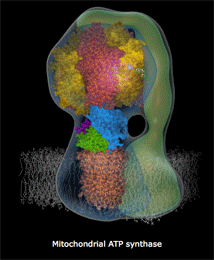How is it you can drink saliva all day long and never run out of the stuff?
Sorry to put the image of spit-drinking in your mind, but you’re doing it right now, am I right? And the more you think about it, the more you do it. Before today is over, you’ll have swallowed more than one vice-president of the stuff. Here’s how I figure it: a healthy human (that’s you) consumes something like a liter of spit per day. That would fill up a typical pitcher, and John Nance Garner, who was vice president under Franklin Roosevelt, once remarked that his job was “not worth a pitcher of warm spit.” So the vice-president, as a unit of saliva volume, is therefore less than your daily output. This reminds me of the names of champagne bottle sizes. The larger sizes are named after rulers of Israel and Babylon. So a double magnum, or three liters of champagne, is known as a Jeroboam (the first king of northern Israel). By extension we might measure salivary volume in terms various legislative occupations. How much is a Speaker of spit? Or a House Minority Whip of spit?
But I digress.
My point is that your body is a collection of remarkably dynamic processes that give the illusion of stasis. And the thing that got me started on this line of thought was this sentence:
In order to provide energy to sustain our lives, every day, each one us produces a quantity of ATP by this mechanism that is approximately equal to our body weights.
Yikes! That’s an astonishing amount of flux for one single molecule. Do you want to see how (most of) this ATP is made? Look at this.

The quote and the image come to us courtesy of the Mitochondrial Biology Unit at Cambridge University. We’ve known for a long time where the ATP was being synthesized. But now we know the shape of all the insane molecules that do that work. The ATP mill you’re looking at here isn’t something exotic. Your body has enough of them to pump out a pound of ATP every ten minutes or so, one molecule at a time. And that is a spitload of ATP.
Seeing that animation causes images of Conway’s game of life to jump into my mind. I guess that makes your blog sort of a “meme gun”.
What’s particularly interesting about that little spinny thing in the picture is that it is actually a pump being used in reverse to generate chemical energy, like turning a DC motor to generate electricity. All of ATP synthase’s relatives spend their time using ATP power to pump protons across biological membranes to produce acid, much like in the linings of our stomachs. Unfortunately for this pump, there’s another pump down the way that does a much better job of pumping electrons, to the point that the proton gradient pushes back against ATP synthase with enough force to run it in reverse. Not the most efficient system for interconverting chemical energy, but look at that guy go!
I would like to apologize for an error in the previous comment: the word “electrons” appeared erroneously, and should be replaced with the word “protons”. Again, I apologize for this error. Now, I’m off to listen to “Pleasures of the Dance: a Selection of Norwegian Carpenters’ Songs.”
We apologize for the previous apology. This apology was unnecessary and appeared on this site owing to an administrative error. Mike O will not, as stated in the previous apology, be listening to “Pleasures of the Dance: A Collection of Norwegian Carpenters’ Songs,” but will instead be listening to “OOO Baby!: A Collection of Popular Ocular and Ophthalmic Oncological Folksongs.”